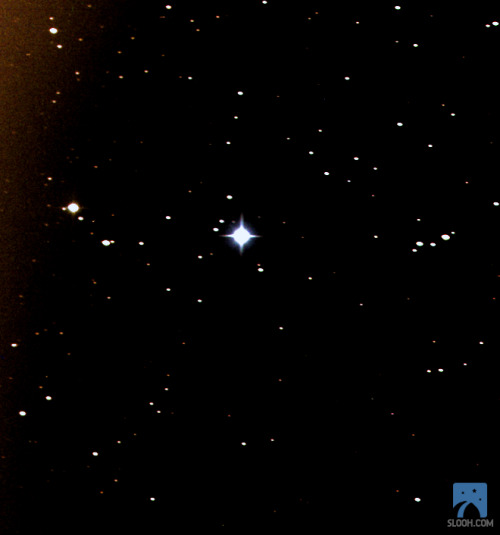Throwback Thursday!

Throwback Thursday!
More Posts from Mystarypi and Others

This is Ceres! 🌠🌠🌠
Ceres is the only dwarf planet in our inner solar system and the largest object within the Asteroid Belt. Water vapor is being released from the dwarf planet, resulting in Ceres losing 6kg of its mass per second through steam! 🌊🌊🌊
Taken by me (Michelle Park) using the Slooh Canary Two telescope on March 7th, 2022 at 20:11 UTC.

One of the most difficult collections ever: the Caldwell object collection! ♥♥♥
Taking around 6 months to complete, this was one of the longest collections ever! Many of these objects could be photographed during specific times of the year so I often had to wait months before I could take a picture. 🎇🎆🌌✨💫
Taken by me (Michelle Park) using the Slooh telescopes!

This is another photo of the Jupiter Saturn Conjunction! 🪐🪐🪐
The two planets are getting closer each day! I love this picture because you can clearly see Jupiter’s 4 largest moons (Io, Europa, Ganymede, and Callisto) and a nice view of Saturn. This event is very rare - Jupiter and Saturn are the closest since the year 1623! ✨✨✨
Taken by me (Michelle Park) using the Slooh Canary Two telescope on December 20th, 2020 at 19:24 UTC.


This is the Rim Nebula! 💖💖💖
This star forming nebula has been drastically shaped by a nearby open star cluster known as NGC 6193. The rampant star formation was caused to a bunch of supernovae taking place during the last batch of stars - meaning that some of these stars are very young (only a few million years old)! 🌃🌃🌃
Taken by me (Michelle Park) using the Slooh Chile Two telescope on February 26th, 2021 at 8:42 UTC.

This is the Trifid Nebula! ✨✨✨
At the center of this nebula is a group of bright newborn stars that are releasing streams of radiation and sculpting the nebula’s shape. Located next to the famous Lagoon Nebula, the Trifid Nebula is a common target for astrophotographers due to its vibrant colors and high visibility! 💖💖💖
Taken by me (Michelle Park) using the Slooh Canary Two telescope on June 3rd, 2022 at 1:17 UTC.
One of my best shots of this stunning galaxy! Please follow my astrophotography tumblr (mystarypi-astronomy.tumblr.com) for similar astrophotos like these!

This is the Silver Coin Galaxy! 💸💸💸
This is one of the brightest and dustiest galaxies known to Earth. With so much dust, star formation is aggressive in this galaxy and thus, it is classified as a starbust galaxy! ✨✨✨
Many scientists think that the star formation may have also been caused by the Silver Coin Galaxy’s collision with a dwarf galaxy billions of years ago! 🌌🌌🌌
Taken by me (Michelle Park) using the Slooh Chile One telescope on October 21st, 2020 at 6:52 UTC.

This is the Rosette Nebula! 🌹🌹🌹
This is definitely the best image I have taken of this giant molecular cloud! This nebula is a star forming region with hot, blue newborn stars at its center that is shaping this region to form a beautiful flower-like shape. As seen from Earth, this nebula appears almost 5 times larger than the full Moon! ✨✨✨
Taken by me (Michelle Park) using the Slooh Chile Two telescope on January 13th, 2021 at 3:02 UTC.









An Overview of Note-Taking Styles
Note-taking is one of the most essential skills a student should master. It allows you to record and review information to be used in the future. But what’s the best way to do so? Here’s an overview of note-taking styles that can help you maximize your learning!





@melisscan
-
 carver-of-roads-and-rivers liked this · 11 months ago
carver-of-roads-and-rivers liked this · 11 months ago -
 reggiespoon liked this · 1 year ago
reggiespoon liked this · 1 year ago -
 danosphere91 reblogged this · 1 year ago
danosphere91 reblogged this · 1 year ago -
 novicecomics-personal reblogged this · 1 year ago
novicecomics-personal reblogged this · 1 year ago -
 tryingtolive4god reblogged this · 1 year ago
tryingtolive4god reblogged this · 1 year ago -
 tryingtolive4god liked this · 1 year ago
tryingtolive4god liked this · 1 year ago -
 mlyvera reblogged this · 2 years ago
mlyvera reblogged this · 2 years ago -
 mlyvera liked this · 2 years ago
mlyvera liked this · 2 years ago -
 flor-de-cerezos liked this · 2 years ago
flor-de-cerezos liked this · 2 years ago -
 irinaspoetry liked this · 2 years ago
irinaspoetry liked this · 2 years ago -
 sillyshapeshifter reblogged this · 2 years ago
sillyshapeshifter reblogged this · 2 years ago -
 shapeshiftingsinner liked this · 2 years ago
shapeshiftingsinner liked this · 2 years ago -
 stayingstrong-andnotgivingup reblogged this · 2 years ago
stayingstrong-andnotgivingup reblogged this · 2 years ago -
 roseblossom1210 liked this · 2 years ago
roseblossom1210 liked this · 2 years ago -
 hallowsquee reblogged this · 2 years ago
hallowsquee reblogged this · 2 years ago -
 pinkikim liked this · 2 years ago
pinkikim liked this · 2 years ago -
 zarzar100 liked this · 2 years ago
zarzar100 liked this · 2 years ago -
 books-boobs-boba reblogged this · 3 years ago
books-boobs-boba reblogged this · 3 years ago -
 books-boobs-boba liked this · 3 years ago
books-boobs-boba liked this · 3 years ago -
 toastbusiness reblogged this · 3 years ago
toastbusiness reblogged this · 3 years ago -
 toastbusiness liked this · 3 years ago
toastbusiness liked this · 3 years ago -
 kyuu-z liked this · 3 years ago
kyuu-z liked this · 3 years ago -
 mytherapistisintherapy liked this · 3 years ago
mytherapistisintherapy liked this · 3 years ago -
 ratsbatsandcatsohmy liked this · 3 years ago
ratsbatsandcatsohmy liked this · 3 years ago -
 vintagevickyy liked this · 3 years ago
vintagevickyy liked this · 3 years ago -
 shadowgl4nce liked this · 3 years ago
shadowgl4nce liked this · 3 years ago -
 the--s--laughterhouse liked this · 3 years ago
the--s--laughterhouse liked this · 3 years ago -
 kwamikikkitale liked this · 3 years ago
kwamikikkitale liked this · 3 years ago -
 cardcaptorkatara reblogged this · 3 years ago
cardcaptorkatara reblogged this · 3 years ago -
 rap-taquito21 reblogged this · 3 years ago
rap-taquito21 reblogged this · 3 years ago -
 rap-taquito21 liked this · 3 years ago
rap-taquito21 liked this · 3 years ago -
 shinylitleo liked this · 3 years ago
shinylitleo liked this · 3 years ago -
 littlelemonlai liked this · 3 years ago
littlelemonlai liked this · 3 years ago -
 sissydiaperedbaby liked this · 3 years ago
sissydiaperedbaby liked this · 3 years ago -
 caffeinenby liked this · 3 years ago
caffeinenby liked this · 3 years ago -
 ohbvcks liked this · 3 years ago
ohbvcks liked this · 3 years ago -
 enigmatic-jinx liked this · 3 years ago
enigmatic-jinx liked this · 3 years ago -
 the-tiniest-lifeboat liked this · 3 years ago
the-tiniest-lifeboat liked this · 3 years ago -
 420-j-3-s liked this · 3 years ago
420-j-3-s liked this · 3 years ago -
 starryrika reblogged this · 3 years ago
starryrika reblogged this · 3 years ago -
 starryrika liked this · 3 years ago
starryrika liked this · 3 years ago -
 laviedanslamort liked this · 3 years ago
laviedanslamort liked this · 3 years ago -
 teddyhearts12 liked this · 3 years ago
teddyhearts12 liked this · 3 years ago -
 unfilteredddmess liked this · 3 years ago
unfilteredddmess liked this · 3 years ago -
 clevertreedreamercalzone liked this · 3 years ago
clevertreedreamercalzone liked this · 3 years ago -
 vivisapphire liked this · 3 years ago
vivisapphire liked this · 3 years ago -
 allieuwur liked this · 3 years ago
allieuwur liked this · 3 years ago -
 coffee-bubbles liked this · 3 years ago
coffee-bubbles liked this · 3 years ago -
 westaftermid reblogged this · 3 years ago
westaftermid reblogged this · 3 years ago
